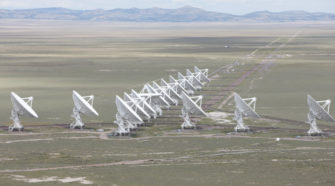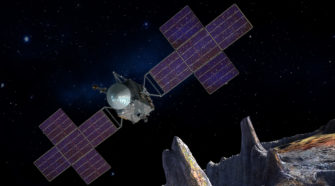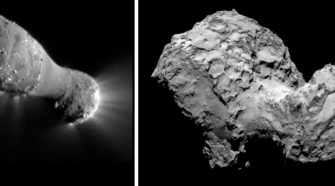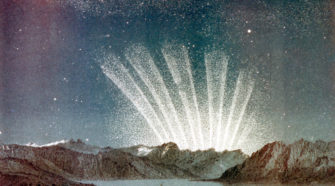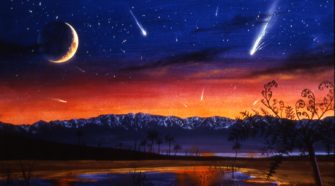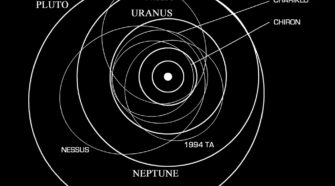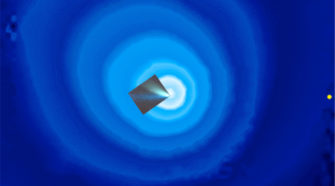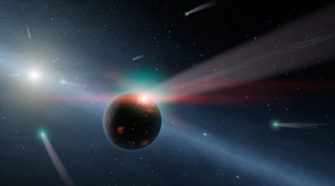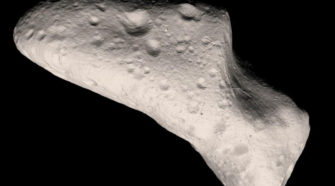Topic
Special Topic: “Small Bodies” and the Electromagnetic Spectrum
The “visible” light that our eyes see, and that most of our telescopes detect, is only a very small part of the electromagnetic spectrum. The full EM spectrum encompasses everything from the long-wavelength, low-frequency, low-energy radio waves, on down through infrared, then “visible” or optical light, and then into the shorter-wavelength, higher-frequency, and higher-energy ultraviolet, …
Special Topic: Resources in “Small Bodies”
When it comes to their composition and internal structure, there is a wide variety among the asteroids. We know this primarily through two means: the study of the various meteorites that have landed on Earth – the subject of a future “Special Topics” presentation – and examination of their spectrum. Although asteroids do not give …
Special Topic: Comet 1P/Halley
To our ancestors of just a few centuries ago, comets were, at best, mysterious objects, very possibly of divine or supernatural origin. When one considers that bright comets could appear anywhere in the nighttime sky, seemingly out of nowhere, and after being visible for a few days or weeks would then disappear, it is little …
Special Topic: Fred Whipple’s Comet Model
Once it had become clear that comets are bona fide members of the solar system just as planets and asteroids are, the question then becomes just what their physical nature might be. While they may appear to be fairly large in our nighttime sky, the fact that background stars shine through their tails and their …
Special Topic: Great Comets
Few, if any, sights in the nighttime sky are more impressive than that of a bright, long-tailed comet. It is little wonder that our ancestors of just a few centuries ago, who had little idea of what they were actually seeing, were amazed and perhaps even terrified of the sight, and even today the appearance …
Special Topic: Stellar Intruders
Five weeks ago I devoted the “Special Topics” presentation to the subject of the Oort Cloud, the large spherical cloud of comets that is believed to enshroud the solar system out to distances of several tens of thousands of Astronomical Units. The comets in the Oort Cloud have been there since the forming Jupiter and …
Special Topic: Centaurs
In previous “Special Topics” presentations I have focused on asteroid populations in the “main asteroid belt” between Mars and Jupiter, and on asteroids in near-Earth space. If, however, as is now widely believed to be the case, asteroids are among the “leftovers” of the planet formation process, we would accordingly expect asteroids to exist in …
Special Topic: Comet observations from space
All astronomers, be they professional or amateur, or even just casual sky-watchers, have often had to contend with the vagaries of the earth’s atmosphere. Clouds will often get in the way, especially at inopportune times; almost every astronomer can recite stories of important observations that were precluded by cloudy weather. Even if the skies are …
Special Topic: Exocomets
It is now generally accepted that the planets in our solar system formed via the accumulation of smaller bodies dubbed “planetesimals” – which in turn formed from the accumulation of dust grains and (in the outer and thus colder regions) gas molecules – early in its history. Due to the early sun’s rotation the infalling …
Special Topic: Asteroid (433) Eros
Two weeks ago I devoted the “Special Topics” presentation to the subject of near-Earth asteroids. Up until almost the end of the 19th Century all of the over 400 asteroids that had been discovered up to that time orbited within the “main asteroid belt” between Mars and Jupiter, and the astronomers of that era were …

